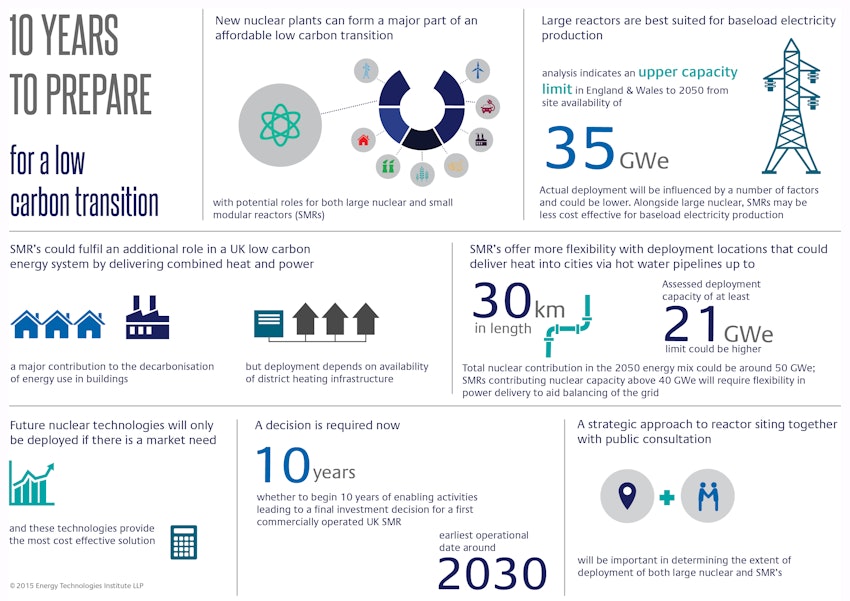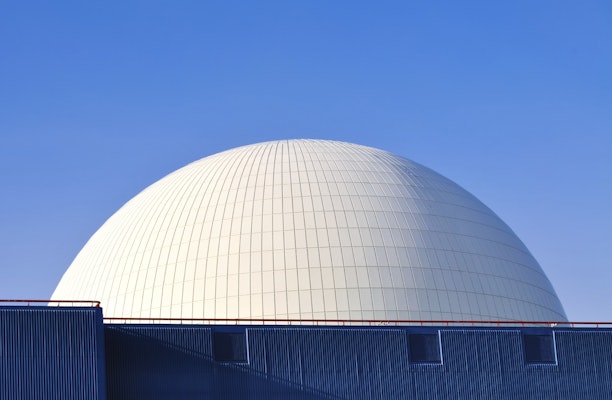The role for nuclear within a low carbon energy system

Mike Middleton
Strategy Manager
New nuclear plants can form a major part of a low carbon transition
The ETI published “Options Choices Action” featuring two contrasting scenarios “Patchwork” and “Clockwork” - for a UK low carbon energy system transition to 2050. New nuclear power stations featured as a prominent component of both scenarios. In this context the ETI has commissioned new analysis of how large and Small Modular Reactor (SMR) nuclear technologies can contribute to decarbonising the UK energy system. For this purpose SMRs are defined as modular for the purpose of incremental addition to power station capacity, and with an electrical generation capacity in units of 300MWe or less. The emergence of multiple developing SMR designs opens up the potential to deploy a wider range of nuclear technologies within an integrated energy system.
This document summarises the insights from three ETI activities undertaken in 2014 and 2015:
- Power Plant Siting Study (PPSS) –delivered for the ETI by Atkins
- System Requirements For Alternative Nuclear Technologies (ANT) – delivered for the ETI by Mott MacDonald with technical support from Rolls-Royce
- In-house ETI energy system modelling and analysis incorporatingthe learning from the PPSS and ANT projects
This analysis has created new understanding of the potentially different contributions from large baseload reactors and SMRs in the UK energy system. These two nuclear technologies can offer potentially complementary roles in baseload and flexible CHP generation, and also in terms of the location of development sites.
Generation IV nuclear technologies are not considered in detail in any of the projects above, but are recognised as a new type of reactor technology potentially available for deployment from 2040 onwards. The PPSS recognises the need to allocate site capacity for such reactors; without suitable sites such future designs could not be built.

Mike Middleton
Strategy Manager
Mike Middleton joined the ETI in April 2013. His diverse experience in nuclear operations, projects and services includes; waterfront submarine support; liquid and solid waste processing; construction projects; nuclear facility decommissioning; and new nuclear power.
